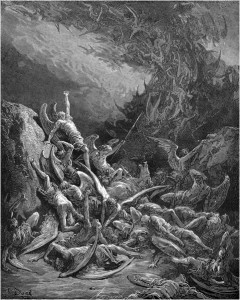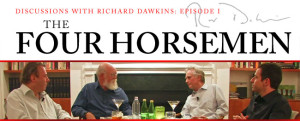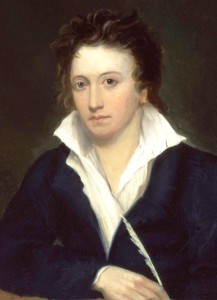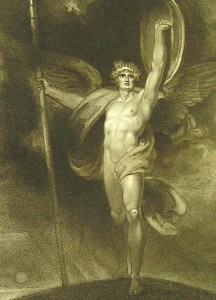Milton’s Satan was able to assume the position of nineteenth-century Romantic Hero in part because the Devil ceased to be terrifying—a shift which took place in the eighteenth century, as orthodox theology’s Prince of Darkness was brought to his deathbed by the Enlightenment. The decline in belief in the Devil as a literal entity walking to and fro in the Earth in search of souls to devour allowed for the Satan of Milton’s Paradise Lost (1667) to be read with greater sympathy as a literary rather than a theological character. Jeffrey Burton Russell, author of a five-volume study of the Devil in history and literature, explains that the “depersonalization of Satan, his reduction to a symbol, and the unmooring of the symbol from Bible and tradition meant that the idea of the Devil could float free of its traditional meanings.”1 Paradoxically, as the Devil shrank in theological significance—as Satan was reduced to symbolic form—he grew in mythic stature. No sooner than the “supernatural figure was killed off,” notes Peter A. Schock in his study of Romantic Satanism, was Satan “resurrected in the form of a modern myth,” indeed, “a Gnostic countermyth that idealize[d] revolution and free thought,” wherein “Milton’s Satan [was] constructed as an idealized antagonist of an Omnipotence embodying the dominant political and religious values of the era.”2 There is a discernible resurgence of this radical Romantic trend in the so-called “New Atheism” movement, which has flourished at the start of the new millennium.

Today, while belief in the Devil (and God, for that matter) is declining, Milton’s Satan looms large. The apostate angel’s impact extends well beyond the bounds of literary criticism, as the spirit of Miltonic Satanism pervades modern popular culture. For instance, His Dark Materials (1995 – 2000) trilogy author Philip Pullman—invoking William Blake’s infamous observation in The Marriage of Heaven and Hell (1790–93) that Milton “was a true Poet and of the Devils party without knowing it”3—has asserted that he is proud to “be of the devil’s party and know it,” reasoning, “if there is a God and he is as the Christians describe him, then he deserves to be put down and rebelled against…”4 This is to say, effectively, that Lucifer was right to revolt against the Almighty, and Pullman more or less confesses his Luciferian allegiance in his Introduction to an Oxford edition of Milton’s Paradise Lost. Pullman opens with a retelling of an anecdotal story “about a bibulous, semi-literate, ageing country squire two hundred years ago or more” who, having Paradise Lost read to him, “Suddenly…bangs the arm of his chair, and exclaims ‘By God! I know not what the outcome may be, but this Lucifer is a damned fine fellow, and I hope he may win!’ Which are my sentiments exactly.”5
Pullman’s unequivocal love for the Miltonic Lucifer permeates his award-winning fantasy novels, described by the author as “Paradise Lost for teenagers in three volumes.”6 Conservative voices have naturally reacted to Pullman with hostility, Peter Hitchens even deeming Pullman “the most dangerous author in Britain,” a hyperbolic assessment echoing Southey’s “Satanic School” diatribe against Lord Byron and Percy Bysshe Shelley.7 The significant difference, of course, is that while Byron and Shelley had to be evasive when it came to their Satanic sympathies, Pullman can be open—boastful, even—about his own. This is indicative of a nascent movement of neo-Romantic Satanism, provoked by theocratic encroachments upon secular life and liberty.
 The Islamic terror attacks against the United States on September 11 of 2001, along with the revitalization of crusaders for Christ which followed in its wake, were met with a backlash of pent-up anti-theism, which became a militant movement deemed “New Atheism,” leading the charge: contrarian Christopher Hitchens, evolutionary biologist Richard Dawkins, neuroscientist Sam Harris, and philosopher Daniel Dennett. These four militant atheists embraced their collective moniker “the Four Horsemen,” but, like the Romantic Satanists, they flipped the Satanic symbolism on its head, waging a war of ideas against organized religion, which, rather than godlessness, they found to be a principal propagator of conquest (jihad), war, famine, and death.8 Yet because New Atheism is suffused by a diabolically charged resistance to religion and is open to employing Satanic symbols (albeit with tongue in cheek) as derisive challenges to the authoritarian God of the religious—both of which were hallmarks of Romantic Satanism and its Satanic School—the Miltonic Satan has reared his head in the New Atheism movement.
The Islamic terror attacks against the United States on September 11 of 2001, along with the revitalization of crusaders for Christ which followed in its wake, were met with a backlash of pent-up anti-theism, which became a militant movement deemed “New Atheism,” leading the charge: contrarian Christopher Hitchens, evolutionary biologist Richard Dawkins, neuroscientist Sam Harris, and philosopher Daniel Dennett. These four militant atheists embraced their collective moniker “the Four Horsemen,” but, like the Romantic Satanists, they flipped the Satanic symbolism on its head, waging a war of ideas against organized religion, which, rather than godlessness, they found to be a principal propagator of conquest (jihad), war, famine, and death.8 Yet because New Atheism is suffused by a diabolically charged resistance to religion and is open to employing Satanic symbols (albeit with tongue in cheek) as derisive challenges to the authoritarian God of the religious—both of which were hallmarks of Romantic Satanism and its Satanic School—the Miltonic Satan has reared his head in the New Atheism movement.
The late iconic public intellectual atheist Christopher Hitchens explained in a 2004 lecture bearing the Shelleyan title “The Moral Necessity of Atheism” that if there truly were a God who ruled as dictator of the cosmos, as the great religions propose, he, an admirer of Milton’s Satan for his unyielding resistance to such a God, would “be of the Devil’s party,” i.e., “I wouldn’t worship it; I wouldn’t agree to be bound by it; I wouldn’t become one the serfs.” Hitchens, who listed Lucifer as one of his favorite heroes of fiction,9 proclaimed a kinship with the Miltonic Satan because he was not only an atheist but a self-styled “anti-theist,”10 and by asserting himself as such, Hitchens echoed the Romantic Satanists two centuries before him.

The Romantic atheist Shelley, who was expelled from Oxford University for refusing to deny authorship and distribution of a pamphlet on The Necessity of Atheism (1811), was explicit that he would feel compelled to defy God if He did exist: “Did I now see him seated in gorgeous & tyrannic majesty as described, upon the throne of infinitude – if I bowed before him, what would virtue say?”11 This same sentiment is expressed by modern-day atheists perhaps less aware of their Romantic forebears and/or less keen on the prospect of using Satanic icons as a means of iconoclasm. For instance, Dan Barker, who transitioned from fundamentalist Christian minister to atheist activist—indeed, the co-president of the Freedom From Religion Foundation—took a rather Shelleyan stance in his book Losing Faith in Faith: “Speaking for myself, if the biblical heaven and hell exist, I would choose hell. Having to spend eternity pretending to worship tyranny would be more hellish than baking in eternal flames. There is no way a Bully will earn my worship.”12 This mirrors in sentiment, if not in eloquence, the fallen rebel angel Mammon in Paradise Lost, who, exploring the idea of returning to Heaven, expounds upon Satan’s “Better to reign in Hell, than serve in Heav’n” (I.263) declaration:
…Suppose he [God] should relent
And publish Grace to all, on promise made
Of new Subjection; with what eyes could we
Stand in his presence humble, and receive
Strict Laws impos’d, to celebrate his Throne
With warbl’d Hymns, and to his Godhead sing
Forc’t Halleluiahs; while he Lordly sits
Our envied Sovran, and his Altar breathes
Ambrosial Odors and Ambrosial Flowers,
Our servile offerings. This must be our task
In Heav’n, this our delight; how wearisome
Eternity so spent in worship paid
To whom we hate. (II.237–49)

Anti-theism gives New Atheism a noble ring, for anti-theists not only dismiss the Judeo-Christian God as nonexistent, but decry Him as malevolent, proudly expressing that (at least in theory) they would prefer to burn in His Hell than bend their knees to Him in Heaven. Yet this is the quintessential Satanic sentiment, for Milton’s Satan in Paradise Lost rejects “Knee-tribute” to the King of Heaven as “prostration vile” (V.782), and when damned to Hell he retains his “unconquerable Will” and “courage never to submit or yield” (I.106, 108) to the God he lambasts as a “Tyrant” (X.466) who “Sole reigning holds the Tyranny of Heav’n” (I.124). What mythic figure could be a more apposite standard-bearer for the anti-theist strain of New Atheism? Reactionary Christians are of course comfortable demonizing the irreligious as friends of Satan, but it is remarkable and certainly culturally significant that a number of prominent nonbelievers increasingly accept this as complementary rather than opprobrious.
Notes
1. Jeffrey Burton Russell, Mephistopheles: The Devil in the Modern World (Ithaca, NY: Cornell University Press, [1986] 1990), p. 169.↩
2. Peter A. Schock, Romantic Satanism: Myth and the Historical Moment in Blake, Shelley, and Byron (New York: Palgrave Macmillan, 2003), pp. 2, 6, 5.↩
3. William Blake, The Complete Poetry and Prose of William Blake, ed. David V. Erdman, rev. ed. (New York: Anchor Books, [1965] 1988), p. 35; pl. 6.↩
4. Quoted in Milton in Popular Culture, eds. Laura Lunger Knoppers and Gregory M. Colón Semenza, aft. Stanley Fish (New York: Palgrave Macmillan, [2006] 2007), pp. 8, 9.↩
5. Philip Pullman, Introduction to Paradise Lost, eds. Stephen Orgel and Jonathan Goldberg (New York: Oxford University Press Inc., 2005), p. 1.↩
6. Quoted in Stephen Burt, “ ‘Fighting Since Time Began’: Milton and Satan in Philip Pullman’s His Dark Materials,” in Milton and Popular Culture, p. 48.↩
7. In the Preface to A Vision of Judgement (1821), Robert Southey wrote: “Men of diseased hearts and depraved imaginations, who, forming a system of opinions to suit their own unhappy course of conduct, have rebelled against the holiest ordinances of human society, and hating that revealed religion which, with all their efforts and bravadoes, they are unable entirely to disbelieve, labour to make others as miserable as themselves, by infecting them with a moral virus that eats into the soul! The school which they have set up may properly be called the Satanic School, for though their productions breathe the spirit of Belial in their lascivious parts, and the spirit of Moloch in those loathsome images of atrocities and horrors which they delight to represent, they are more especially characterised by a Satanic spirit of pride and audacious impiety, which still betrays the wretched feeling of hopelessness wherewith it is allied.” Quoted in C. L. Cline, “Byron and Southey: A Suppressed Rejoinder,” Keats-Shelley Journal, Vol. 3 (Winter, 1954), p. 30.↩
8. See Revelation 6:1-8.↩
9. See Christopher Hitchens, Hitch-22: A Memoir (New York: Twelve, 2010), p. 331.↩
10. In his Introduction to The Portable Atheist: Essential Readings for the Nonbeliever (Philadelphia: Da Capo Press, 2007), p. xxii, Christopher Hitchens provided his most thorough explanation of his “anti-theist” stance: “I myself have tried to formulate a position I call ‘anti-theist.’ There are, after all, atheists who say that they wish the fable were true but are unable to suspend the requisite disbelief, or have relinquished belief only with regret. To this I reply: who wishes that there was a permanent, unalterable celestial despotism that subjected us to continual surveillance and could convict us of thought-crime, and who regarded us as its private property even after we died? How happy we ought to be, at the reflection that there exists not a shred of respectable evidence to support such a horrible hypothesis. And how grateful we should be to those of our predecessors who repudiated this utter negation of human freedom.”↩
11. Percy Bysshe Shelley, quoted in Schock, p. 80.↩
12. Dan Barker, Losing Faith in Faith: From Preacher to Atheist (Madison, WI: Freedom From Religion Foundation, Inc., [1992] 2006), p. 331.↩